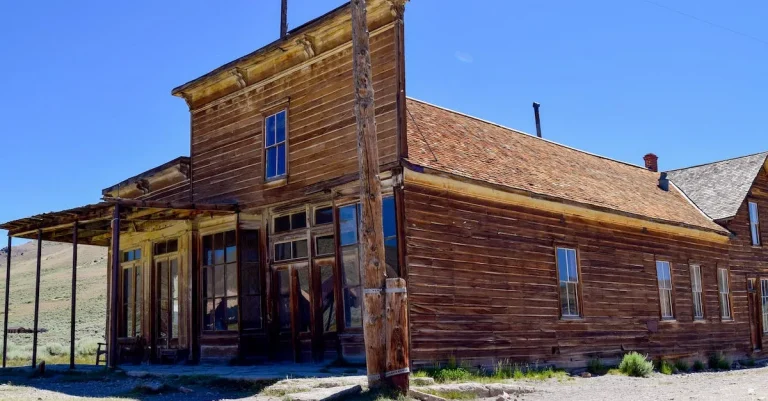How Many Texases Can Fit In Alaska?
Texas is famous for its expansive size, but just how massive is the Lone Star State compared to the nation’s largest state, Alaska? If you’re short on time, here’s a quick answer: Over 2 Texases could fit inside Alaska.
This in-depth guide will break down exactly how the total land area of Texas compares to the sprawling wilderness of Alaska. We’ll look at the square mileage and dimensions of each state and calculate how many times Texas could fit inside Alaska’s borders. You’ll also learn some interesting facts about the unique geography and climates of these two iconic states.
Total Square Mileage of Texas vs. Alaska
Texas Spans 268,597 Square Miles
When it comes to land size, Texas is no small fry. Spanning an impressive 268,597 square miles, the Lone Star State holds the title of the second largest state in the United States. Its vast expanse is home to diverse landscapes, ranging from deserts and plains to forests and mountains.
It’s no wonder that everything is bigger in Texas!
Alaska Stretches Across 663,268 Square Miles
While Texas may be large, it pales in comparison to the sheer size of Alaska. Stretching across a staggering 663,268 square miles, Alaska holds the crown as the largest state in the U.S. In fact, it is more than twice the size of Texas!
Its immense land area is home to breathtaking natural wonders, including glaciers, mountains, and untouched wilderness.
Visualizing the Size Difference on a Map
To truly grasp the magnitude of the size difference between Texas and Alaska, it helps to visualize it on a map. Imagine taking the entire state of Texas and placing it within the borders of Alaska. Even then, you would still have plenty of room to spare!
The vastness of Alaska’s land area is truly awe-inspiring.
For a more interactive comparison, you can visit The True Size Of, a website that allows you to drag and drop different countries and states onto a world map to see their true proportions. This tool can help you gain a better understanding of just how many Texases can fit into Alaska!
How Many Times Could Texas Fit Inside Alaska?
Doing the Math of Texas Fit Inside Alaska
When it comes to comparing the size of two states, it’s important to consider both their land area and their borders. In the case of Texas and Alaska, the numbers can be truly staggering. Texas, known for its vast expanses and big everything, covers approximately 268,597 square miles.
On the other hand, Alaska, the largest state in the United States, spans a whopping 663,300 square miles. So, how many times could Texas fit inside Alaska?
To find the answer, we need to divide the land area of Alaska by the land area of Texas. Using simple math, we discover that Alaska could fit over 2 Texases within its borders. That’s right – you could fit Texas inside Alaska twice and still have room to spare!
This mind-boggling fact showcases the sheer scale of Alaska’s vast wilderness.
Accounting for Alaska’s Irregular Shape and Borders
It’s important to note that the calculation above is based on straight land area comparisons. However, it’s worth mentioning that Alaska’s irregular shape and borders contribute to its incredible size.
From the rugged coastline that stretches for thousands of miles to the numerous rivers and lakes dotting the state, Alaska’s geographical features add to its overall landmass.
Additionally, Alaska’s borders are not solely defined by land. The state also includes a vast expanse of water, with the Pacific Ocean to the south and the Arctic Ocean to the north. This expansive maritime territory further adds to Alaska’s size and contributes to its unique character.
The Answer: Over 2 Texases in Alaska
So, to answer the question of how many Texases could fit inside Alaska, the answer is over 2. This comparison serves as a reminder of just how immense and diverse the United States truly is. From the bustling cities of Texas to the untamed wilderness of Alaska, each state offers its own unique charm and natural beauty.
Whether you’re exploring the Lone Star State or venturing into the Last Frontier, both Texas and Alaska have plenty to offer.
Comparing the Climates and Geography
Texas’ Hot and Humid Climate
When it comes to climate, Texas is known for its scorching hot summers and mild winters. The state experiences a subtropical climate, with high humidity levels and temperatures often reaching above 100 degrees Fahrenheit in the summer months.
The coastal regions of Texas are particularly prone to hurricanes and tropical storms, due to its proximity to the Gulf of Mexico. The state also experiences a wide range of weather phenomena, including tornadoes and severe thunderstorms.
With its diverse geography, Texas boasts a range of landscapes, from the coastal plains in the southeast to the desert regions in the west.
Alaska’s Frigid Winters and Cool Summers
Alaska, on the other hand, is known for its extreme cold temperatures and long winters. The state experiences a subarctic climate, with freezing temperatures commonly dropping below zero degrees Fahrenheit.
In some areas, temperatures can even plunge to -50 degrees Fahrenheit during the winter months. Summers in Alaska are relatively short and cool, with temperatures ranging from 50 to 70 degrees Fahrenheit.
The state is also known for its stunning natural beauty, with vast stretches of untouched wilderness, icy glaciers, and towering mountains.
Mountain Ranges, Rivers, and Other Features
Both Texas and Alaska boast unique geographical features that add to their distinctiveness. Texas is home to several mountain ranges, including the Guadalupe Mountains and the Davis Mountains. The state also has numerous rivers, such as the Rio Grande and the Brazos River, which contribute to its agricultural and recreational activities.
Alaska, on the other hand, is renowned for its majestic mountain ranges, including the Alaska Range and the Brooks Range. The state is also home to the mighty Yukon River, one of the longest rivers in North America.
Its vast size and diverse landscapes make Alaska a haven for outdoor enthusiasts and nature lovers.
Interesting Facts About the Sizes of Alaska and Texas
Texas is the Second Largest State After Alaska
Did you know that Texas is the second largest state in the United States, right after Alaska? With an area of approximately 268,596 square miles, Texas is truly massive. To put it into perspective, you could fit about three and a half Texases within Alaska’s borders.
That’s how vast and expansive Alaska is!
Alaska Has the Longest Coastline and Most Lakes
Alaska is not only the largest state in terms of land area, but it also boasts the longest coastline among all the states. Stretching over 6,640 miles, Alaska’s coastline is a sight to behold. Moreover, Alaska is home to more than 3 million lakes, including the famous Lake Iliamna and Lake Clark.
These lakes not only provide stunning views but also support a diverse ecosystem.
Texas’ Huge Population Compared to Alaska
While Alaska may be larger in terms of land area, Texas takes the lead in terms of population. With over 29 million residents, Texas has a much denser population compared to Alaska’s approximately 731,000 residents.
In fact, if you were to distribute Alaska’s population evenly across the state, each person would have about 1.3 square miles to themselves. That’s a lot of personal space!
For more information, you can visit the following websites:
Why Size and Scale Matter
When it comes to comparing the sizes of different geographical areas, understanding the concept of size and scale is crucial. One interesting comparison is between Texas and Alaska. Texas is the second-largest state in the United States, while Alaska takes the top spot as the largest.
But just how big is Alaska compared to Texas? Let’s dive into the details.
Impact on Travel Time and Transportation
The sheer size of Alaska has a significant impact on travel time and transportation within the state. With over 663,000 square miles of land, Alaska’s vastness presents unique challenges for its transportation infrastructure.
The state has a limited road network, and many areas are accessible only by air or water. This can lead to longer travel times and higher transportation costs for residents and businesses.
The size comparison between Texas and Alaska is mind-boggling. While Texas covers roughly 268,600 square miles, Alaska is more than two and a half times larger, spanning over 663,000 square miles. To put it into perspective, you can fit about 2.5 Texases within the borders of Alaska!
Effect on Wildlife and National Parks
Alaska’s enormous size also has a profound effect on its wildlife and national parks. The state boasts an abundance of pristine wilderness and diverse ecosystems, making it a haven for various species. Alaska is home to iconic wildlife such as grizzly bears, moose, and bald eagles.
Furthermore, Alaska is home to several national parks, including Denali National Park and Preserve, which encompasses 6 million acres of breathtaking landscapes. The vast size of these parks allows for the preservation of natural habitats and provides ample space for wildlife to thrive.
Influence on Economy and Resources
The size of Alaska plays a crucial role in its economy and availability of resources. The state is rich in natural resources, including oil, gas, minerals, and fish. The size of Alaska allows for the extraction and utilization of these resources, contributing to its economic growth and providing employment opportunities.
Additionally, Alaska’s vastness attracts tourists from around the world, generating revenue for local businesses and supporting the tourism industry. Visitors come to experience the unique landscapes, wildlife, and outdoor activities that can only be found in this expansive state.
Conclusion
When comparing the massive size of Alaska to the expansive Lone Star State, it’s clear that over 2 Texases could fit inside Alaska’s sprawling territory.
While these two iconic states differ greatly in climate, geography and population, their sheer size and scale impact everything from transportation to wildlife. The next time you look at a map, remember just how big Alaska is compared to Texas!








